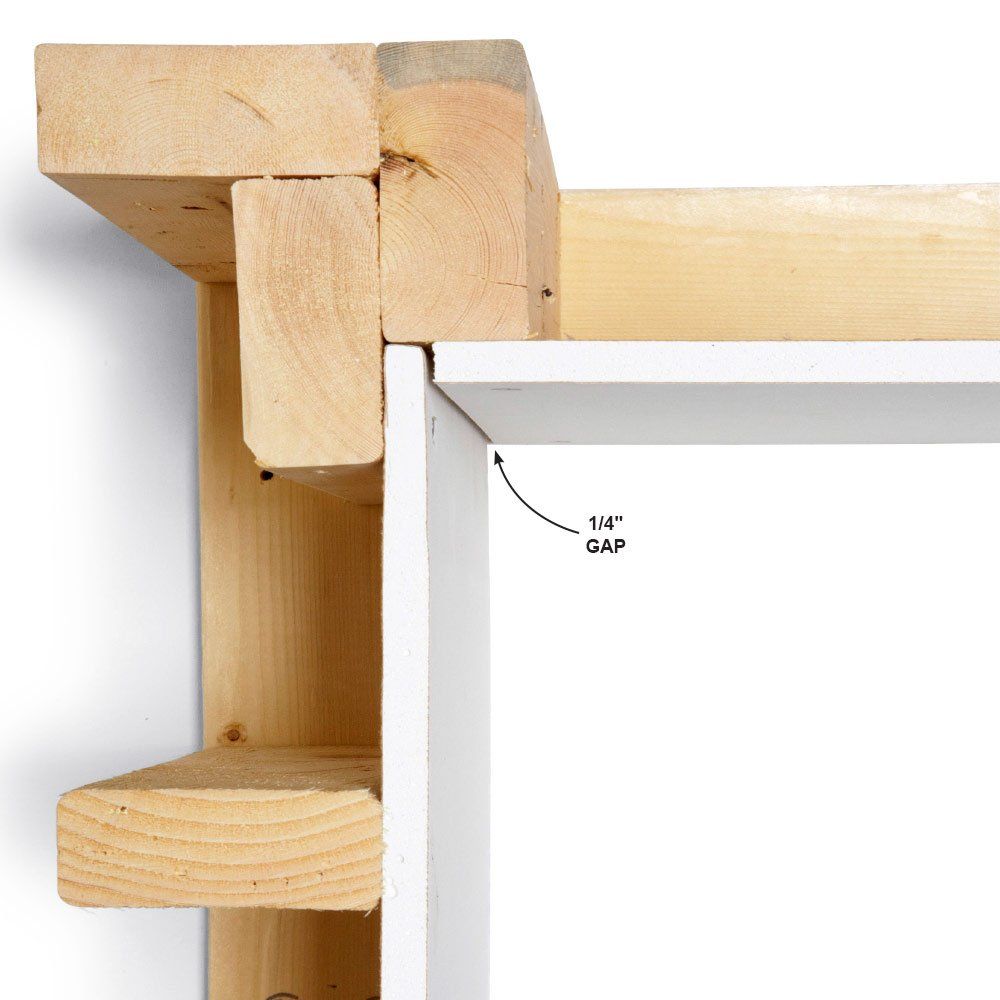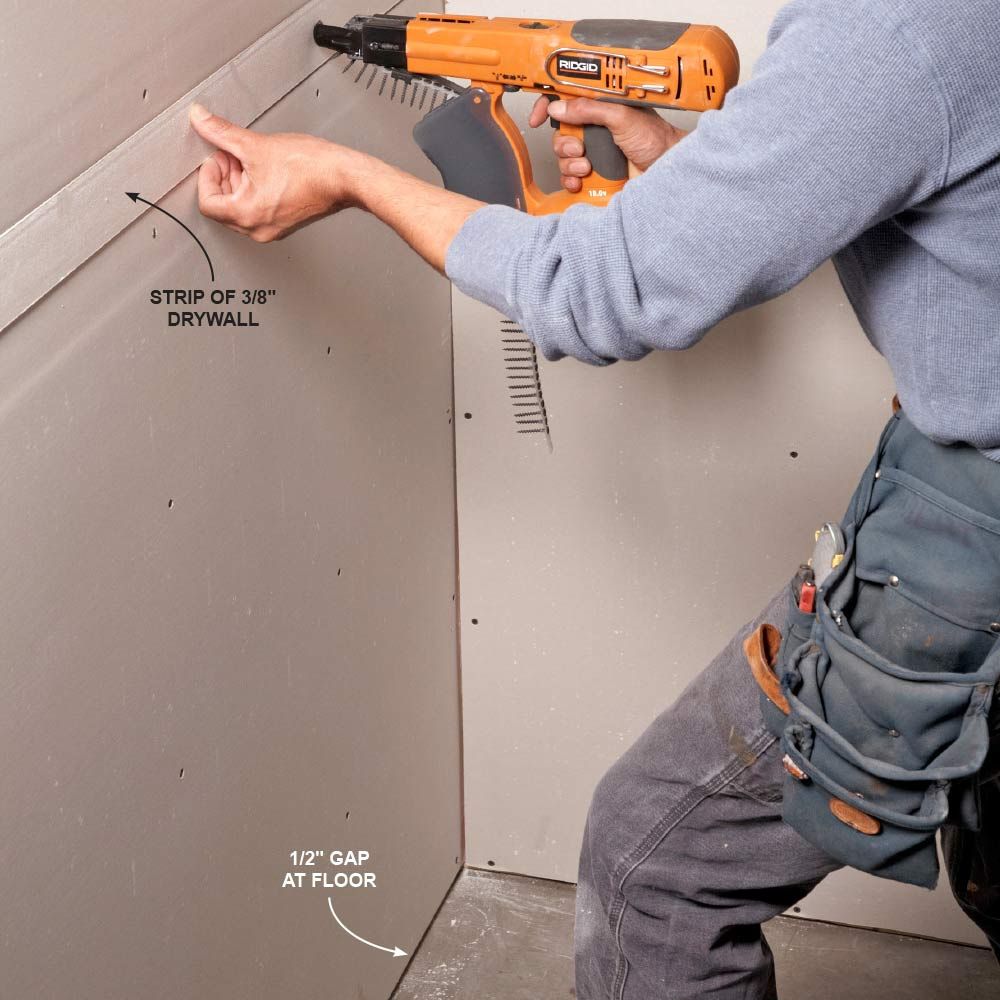How to cut outside plasterboard corners

It’s tempting to cut the first piece of an outside corner flush with the framing and run the perpendicular piece flush with the first. Don’t do it. If you run the first piece just a little too long, the second piece will flare out. If you cut the second piece a bit too long, it will have to be shaved down to accommodate the corner bead. A good-quality metal corner bead will cover a gap and hold up as well as a perfectly flush corner—without the fuss.
Hang it, then cut it

You can save time and be guaranteed a perfect fit if you cut out the door opening after you hang the sheet. Once the sheet is up, score the back of the piece, pull the scrap forward and finish it off by cutting the paper on the front side.
Inside corners: measure exact, then subtract

When you’re working in a smaller area like a wardrobe and have to cut a piece that’s going to fit between two perpendicular walls, don’t try to cut exactly. Precision is a worthy goal, but you’re not building a piano. All the inside corners are going to receive mud and tape anyway. If the piece is too big and you try to force it into place (which you will do), besides scraping up the plasterboard on an adjacent wall, you’re more than likely going to damage the piece you’re trying to install.







